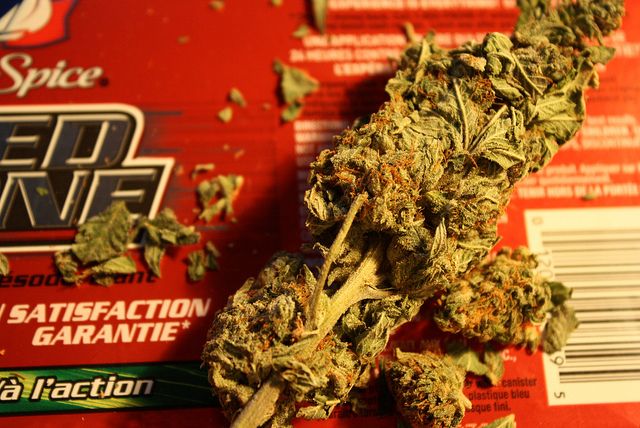Tackling the ‘Politics of Weed’ In Our Neighborhood This Sunday


The Brooklyn district attorney’s recent announcement that his office would no longer prosecute first-time offenders arrested for low-level misdemeanor marijuana possession has generated much discussion throughout the five boroughs about the city’s marijuana laws, from the amount of resources spent on pot arrests to the role race plays in these arrests.
The number of marijuana arrests have skyrocketed over the past decade and a half, in part because of increased use of stop-and-frisk, and, according to statistics from the New York Times, there were 8,150 cases during the 2013 fiscal year in which the top count was for minor marijuana possession. This, the DA said, has resulted in too much money being spent on a policy that overwhelmingly impacts people of color.From the DA’s release:
This new policy is a reasonable response to the thousands of low-level marijuana arrests that weigh down the criminal justice system, require significant resources that could be redirected to more serious crimes and take an unnecessary toll on offenders. Pursuant to this policy, we will use our prosecutorial discretion to decline to prosecute, and dismiss upfront, certain low-level marijuana possession cases based on criteria concerning the particular individual and the circumstances of the case. For example, cases will be dismissed prior to arraignment for those with little or no criminal record, but we will continue to prosecute marijuana cases which most clearly raise public health and safety concerns.
In our neighborhood, area leaders have thrown their support behind the DA’s plan. For example, Councilman Jumaane Williams said in a previous press release:
I applaud DA Ken Thompson’s proposal to stop prosecuting people arrested for possessing small amounts of marijuana. As a strong advocate for legalizing and regulating marijuana, I am happy to see efforts being made to fix a broken system that has left hundreds of thousands of New Yorkers behind bars. Arresting people for low level possession has long been a way that young men of more color have become stigmatized for engaging in nonviolent conduct that poses no threat or harm to our community. Further, we know thatmarijuana use is at minimum proportional across racial lines, yet black and brown residents suffer from a majority of the arrests, though many studies show that whites use it at a larger proportion. Momentum has also grown on this issue since more than 30 years ago, New York State passed legislation reducing the penalty for possession 25 grams or less to non-criminal violation. It is long past time that we end this disparity, and this proposal brings us one step closer to ending that stigma and one day legalizing marijuana in New York.
Now, this Sunday, the discussion surrounding this topic will continue at All Souls Bethlehem Church (566 East 7th Street between Ditmas and Cortelyou), when there will be a talk given entitled “The Parable of the Weeds & Politics of Weed: The Marijuana Laws and the Racist Aspects.” The talk will be a part of the church’s worship service, which begins at 10:30am.The history of race and drugs and arrests is a long one – and, when it comes to the marijuana prohibition laws created in the 1930s, they were, as The Fix’s Maia Szalavitz writes, “based on early 20th century racism and ‘science circa the Jim Crow era.”Szalavitz writes:
The truth is that our perceptions of marijuana—and in fact all of our drug laws—are based on early 20th century racism and “science” circa the Jim Crow era. In the early decades of the 20th century, the drug was linked to Mexican immigrants and black jazzmen, who were seen as potentially dangerous.
Harry Anslinger, the first commissioner of the Federal Bureau of Narcotics (an early predecessor of the DEA), was one of the driving forces behind pot prohibition. He pushed it for explicitly racist reasons, saying, “Reefer makes darkies think they’re as good as white men,” and:
“There are 100,000 total marijuana smokers in the U.S., and most are Negroes, Hispanics, Filipinos and entertainers. Their Satanic music, jazz and swing result from marijuana use. This marijuana causes white women to seek sexual relations with Negroes, entertainers and any others.”
The main reason to prohibit marijuana, he said was “its effect on the degenerate races.” (And god forbid women should sleep with entertainers!)
Although it sounds absurd now, it was this type of propaganda that caused the drug to be outlawed in 1937—along with support from the Hearst newspapers, which ran ads calling marijuana “the assassin of youth” and published stories about how it led to violence and insanity. Anslinger remained as head of federal narcotics efforts as late as 1962, whereafter he spread his poisonous message to the world as the American representative to the U.N. for drug policy for a further two years.
Before marijuana was made illegal, the American Medical Association’s opposition to prohibition was ignored, as was an earlier report on marijuana in India by the British government, which did not find marijuana to be particularly addictive or dangerous. That “Indian Hemp Drugs Committee” reporthad concluded way back in 1894 that, “The moderate use of hemp drugs is practically attended by no evil results at all.
What do you think of all of this? Do you agree with the DA’s plan? What would you like to see addressed in forums such as the one happening Sunday?
Photo via Blind Nomad.



